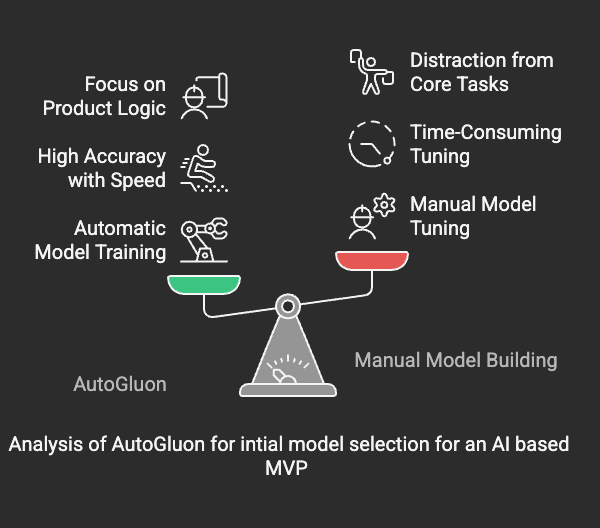Stochastic Gradient Descent (SGD) in Real Life
Ever thought how can an AI learning algorithm be applied to real life?
The answer - Stochastic Gradient Descent (SGD)!
We often see challenges as mountains—massive, intimidating, and impossible to conquer in one leap. This mindset can lead to procrastination, stress, or even giving up.
But here’s a powerful strategy from AI called Stochastic Gradient Descent (SGD).

The SGD Philosophy
SGD teaches us that the key to solving huge problems is breaking them down into tiny, manageable steps. AI models use this method to learn and gradually improve, step-by-step, until achieving remarkable results.
How SGD Works in Machine Learning:
- Start with an initial guess (however imperfect)
- Take small steps toward the optimal solution
- Learn from each step and adjust the direction
- Repeat consistently until reaching the goal
- Accept that progress isn’t always linear - sometimes you might take a step back to move forward
My Personal SGD Journey
During my master’s thesis, building a deep learning model-based solution for a computer vision problem seemed overwhelming. The scope was massive:
- Literature review of hundreds of papers
- Dataset creation and annotation
- Model architecture design
- Training and optimization
- Validation and testing
- Writing and documentation
But I remembered SGD: focus on small daily improvements, not giant leaps. This mindset shift helped me stay consistent and achieve my goals successfully.
Breaking Down the Mountain:
Instead of trying to solve everything at once, I applied SGD principles:
📈 Daily Literature Review: Read 2-3 papers per day instead of trying to consume everything at once
📈 Incremental Dataset Building: Annotate 20-30 images daily rather than marathon annotation sessions
📈 Iterative Model Development: Start with a simple baseline and gradually add complexity
📈 Consistent Writing: Write 200-300 words daily instead of waiting for “inspiration”
The Power of Compound Progress
Just like how neural networks achieve remarkable performance through countless small weight updates, tiny steps compound into massive success.
Key SGD Life Principles:
🔄 Consistency over Intensity: Small daily actions beat sporadic bursts of effort
🔄 Progress over Perfection: Each step doesn’t need to be perfect, just directionally correct
🔄 Adaptation over Rigidity: Be willing to adjust your approach based on feedback
🔄 Patience over Pressure: Trust the process and give time for results to compound
Real-World Applications
The SGD mindset can be applied to virtually any overwhelming goal:
- Learning a new skill: Practice 15-30 minutes daily
- Getting fit: Start with 10-minute walks, gradually increase
- Building a project: Commit to small daily progress
- Reading more: Read 10 pages per day instead of trying to finish books in one sitting
- Career development: Make one networking connection or learn one new concept daily
The Science Behind Small Steps
Research in behavioral psychology supports the SGD approach:
- Habit formation is more effective with small, consistent actions
- Cognitive load is reduced when tasks are broken down
- Motivation is sustained through regular small wins
- Neural pathways strengthen through repetition, not intensity
Your SGD Journey
What big goal or task are you currently tackling by taking small, consistent steps?
I’d love to hear your experiences! 👇
Some questions to reflect on:
- What mountain are you currently facing?
- How could you break it down into daily mini-steps?
- What would your “learning rate” be - how fast or slow should you progress?
Remember: Tiny steps compound into massive success.
Just like AI models that start with random weights and gradually learn to perform incredible tasks, you too can achieve remarkable results through the power of consistent, small improvements.